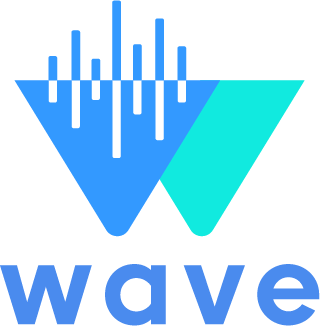Optimise Your Website for Lead Generation

Share this post
For many businesses, optimising your website for lead generation is the best investment that you can make. It not only ensures that you're building relationships with your audience and potential customers, but you're also constantly bringing in future business with an effective inbound marketing strategy and tactics.
At its most basic level, lead nurturing is the process of building relationships with your customers and ushering them through the buyer’s journey toward making a purchase.
At Wave we’ve got a dream team working behind the scenes on our client websites and we have some top tips to share with you as quick wins, so that you can optimise your website for lead generation too. Plus if you get stuck just drop us a line!!
Add forms to the pages that get the most traffic
Collecting contact information from potential clients is the crucial first step to growing your audience, and with it, your business. The most important thing to remember here is how you set this form and all the elements that are part of it. You need to collect email addresses so you can delight and nurture leads, capturing and converting them into paid customers.
When it comes to the form itself remember to keep it as frictionless as possible. Keep it simple, keep the form fields large (ideal for mobile users). You can also set up forms to prefill for users, so anyone you’ve already encountered won’t have to enter their details twice. Every little thing helps when it comes to smooth user experience!
Top Tip: To prevent web crawlers and robots from overloading your website with spam messages, a CAPTCHA (Completely Automated Public Test to tell Computers and Humans Apart) tool generates test fields that only human users can pass before the form is submitted.
Get started with basic call-to-actions (CTAs)
Convincing your prospects is one of the toughest parts of your website's purpose and your overall inbound marketing strategy. Knowing your target audience and building the business persona can be effective to help you build a consistent, convincing and attention-grabbing CTA that captures more leads.
Words like “download” or “click” or “share” are fairly standard CTA verbs for encouraging someone to download a piece of premium content. But these phrases are for people who are already engaged with you. When the focus is on generating a lead, you need a different approach. In this instance, think about “Learn,” “Read,” “Discover,” or “Find out.” These phrases imply that you’re being helpful and encourage exploration.
Button shape can also play a big role when attempting to craft the perfect CTA button. You’ll need to consider whether you want to go with a more rounded button shape or a button with square edges. It’s hard to say what works better as both styles are common and both can perform well in different settings, plus it’s often down to your own personal preference. Ultimately you’ll have to test shapes and see what works best for your website and brand.
Measure performance, track users and optimise the journey
So this step in your inbound journey is easier than you think, because you can just set up a “goal” for each of your lead generation pages using tools like Google Analytics. If you weren’t doing any tracking before, then looking at your results is like turning the lights on. This will show you what is working and what isn’t and then you can adapt your website layout (and content) to champion the ‘best bits’.
You can also use tools like Google Analytics to track user behaviour. As soon as a visitor lands on your website, this is when you can start learning about their conversion path. This path starts when a visitor visits your site, and ends (hopefully) with them filling out a form and becoming a lead.
By adding a unique identifier to a website or landing page URL, you can measure valuable data. This can include page views per visit, impressions, average time on site, conversions, clicks, click-through rates, percentage of new visitors, and bounce rate. These stats can help you understand how your content is being received by your audience so that you can optimise it accordingly.
Going through a customer journey mapping process on your website can increase your understanding of where you should focus your energy to optimise the customer experience on your website and tackle customer pain points.
Did you know: A tracking URL is a standard link that has parameters attached to it for the purpose of tracking and analytics. These parameters enable URL traffic to be properly analysed so that content can be adjusted in order to encourage engagement and increase visits and conversions.
Nurture your leads
In most cases only a relatively small percentage of your inbound leads will be ready to make an immediate purchase, so it’s important to support this group to that final stage to secure the business. Lead nurturing is similar to any relationship: The more you put into it, the more you get out of it. But if you fail to strengthen a relationship, then you’ll naturally drift apart.
Industry research shows that nurturing your leads with targeted content can significantly improve results. Whilst utilising an effective multi-channel approach is also recommended and will involve a combination of the following:
Marketing automation
The perfect way to reach out to a prospect in a timely way is to set up an automated lead nurturing sequence or workflow. These are triggered interactions (often emails) that initiate once a buyer takes action, such as when they download an ebook or sign up for a subscription to your blog. The moment they fill out their information, this triggers a response to thank them and offer them more information or helpful tips.
Email marketing
Not only is email marketing more cost-effective than advertising, but it can also be personalised through data and user behaviour research. Email segmentation, or the division of email subscribers into smaller groups based on different parameters, allows you to target leads more effectively.
Social media
Social media is an effective way to build relationships with prospects. It gives them an easy way to talk to you, and it also puts your content where many people spend their time. You can use social media to distribute your content and to show some of your brand’s personality.
Paid retargeting
This is when someone comes to your site and leaves, but is subsequently shown your advertisement on another site, such as Facebook or other social media sites. There are two main types of retargeting: pixel-based and list-based. The way each works is slightly different, and each has different advantages based on your campaign goals.
Dynamic website content
Content marketing is an incredibly useful strategy that revolves around creating content, such as blog posts, e-books, FAQs, how-to articles, webinars, research reports and more. You can use this content to build brand awareness and draw in more people.
Direct sales outreach
Lead nurturing is a team exercise. Both marketing and sales should be involved at different stages of your lead’s journey. And to avoid confusion, you need clear responsibilities for both teams. As sales reps add names to your contact database, empower them to add those names to a nurturing program as well. This way, they feel confident that contacts are being warmed up instantly.
This can all be automated or personalised, but either way it should be consistent and considered.
It’s then really important to follow up with your leads in a timely manner. You could then implement a lead scoring strategy to help you determine which leads you should focus your time on.
So if you want to get in touch because you have more questions or because you want to take the next step to optimise your website for lead generation, then just click on the button below and say hello.





